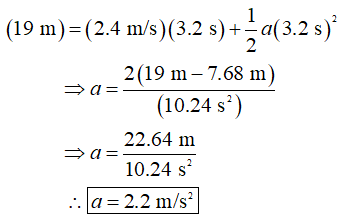The initial velocity of the puppy was 2.4 m/s. During this "burst," the puppy covers a distance of 19 m in a time of 3.2 s. a) What is the acceleration of the puppy? b) How fast is the puppy going after the 3.2 s?
Displacement, Velocity and Acceleration
In classical mechanics, kinematics deals with the motion of a particle. It deals only with the position, velocity, acceleration, and displacement of a particle. It has no concern about the source of motion.
Linear Displacement
The term "displacement" refers to when something shifts away from its original "location," and "linear" refers to a straight line. As a result, “Linear Displacement” can be described as the movement of an object in a straight line along a single axis, for example, from side to side or up and down. Non-contact sensors such as LVDTs and other linear location sensors can calculate linear displacement. Non-contact sensors such as LVDTs and other linear location sensors can calculate linear displacement. Linear displacement is usually measured in millimeters or inches and may be positive or negative.
Michael Kik takes his puppy for a walk in the park. Part way through, the puppy spots a squirrel! The puppy bolts off towards the squirrel. The initial velocity of the puppy was 2.4 m/s. During this "burst," the puppy covers a distance of 19 m in a time of 3.2 s.
a) What is the acceleration of the puppy?
b) How fast is the puppy going after the 3.2 s?
As per the given data,
Initial velocity (u) = 2.4 m/s;
Distance covered (s) = 19 m;
Time (t) = 3.2 s;
Part (a):
From the equations of motion,

Substitute all the required values in the above equation, to get the acceleration (a)

Step by step
Solved in 2 steps with 4 images









